Last updated: September 9, 2022
Article
Historical Buildings Survey Update: Mormon Pioneer Trail, July 2022

Photo/Amy Kostine
Historic Buildings & Structures Associated with the Mormon Pioneer National Historic Trail Nauvoo, IL to North Platte, NE
From 1839 to 1846, Nauvoo, Illinois, served as the headquarters of The Church of Jesus Christ of Latter-day Saints. After prophet and church founder Joseph Smith and his brother, Hyrum, were murdered by a mob at the Carthage Jail on June 27, 1844, Brigham Young became Joseph Smith’s successor. He began planning a spring 1846 evacuation of the church’s followers, known as Mormons, from Nauvoo to the Great Salt Lake Valley in present-day Utah to avoid further religious conflict. Their 1,415-mile route through portions of Illinois, Iowa, Nebraska, Wyoming, and Utah from 1846-1847 was designated a National Historic Trail by Congress in 1978.
Since the Mormon Pioneer National Historic Trail’s designation, a systematic survey of historic buildings and structures associated with the trail had not been undertaken. Recognizing a need for this, the Center for Historic Preservation at Middle Tennessee State University, in partnership with the National Trails office of the National Park Service, and in consultation with the Iowa Mormon Trails Association, The Church of Jesus Christ of Latter-day Saints, and the Community of Christ, conducted a comprehensive survey from 2020 through 2022 to identify and assess the trail’s existing historic buildings and structures from Nauvoo, Illinois, to North Platte, Nebraska.
As one may suspect, approximately 175 years of development and improvements impacted the trail’s historic landscape. Many of the local wagon roads, established American Indian trails, and fur trading trails that were utilized by Mormons to reach the Great Salt Lake Valley, for example, were plowed, paved, and/or expanded over time to make way for an increasing population and later the invention of the motor vehicle. Despite these changes, swales still sporadically mark the location of the route on the landscape today. Much like the trail’s route, its remaining buildings represent a mixture of those nearly untouched by time and those that have undergone alterations over the years.
During the course of this study, 64 buildings and three structures were identified for their known or potential connection to the trail. Forty-nine of the buildings and structures are in Illinois, 17 are in Iowa, and only one is located in Nebraska. [Nebraska was open prairie in 1846-1847, with little settlement and few permanent structures.] The vast majority of the buildings and structures, 48 in total, are located in Nauvoo. After being pushed out of Missouri, Mormon refugees began scattering across Illinois and Iowa. Many purchased land in the town of Commerce, Illinois, and began developing a settlement within the small town, which sat directly on the Mississippi River. Mormon settlers eventually changed the name Commerce to the Hebrew word Nauvoo, meaning "the beautiful place." During the Mormon occupation of Nauvoo from 1839 to 1847, the town grew rapidly in population and density with a flurry of construction, making it one of the largest towns in Illinois, rivalling the population of Chicago. Land was purchased at a quick rate, and major construction began in Nauvoo as soon as the first Mormons arrived. One of the most significant changes across the Nauvoo landscape during the Mormon occupation was the erection of buildings, including homes, workshops, businesses, and places for religious worship.
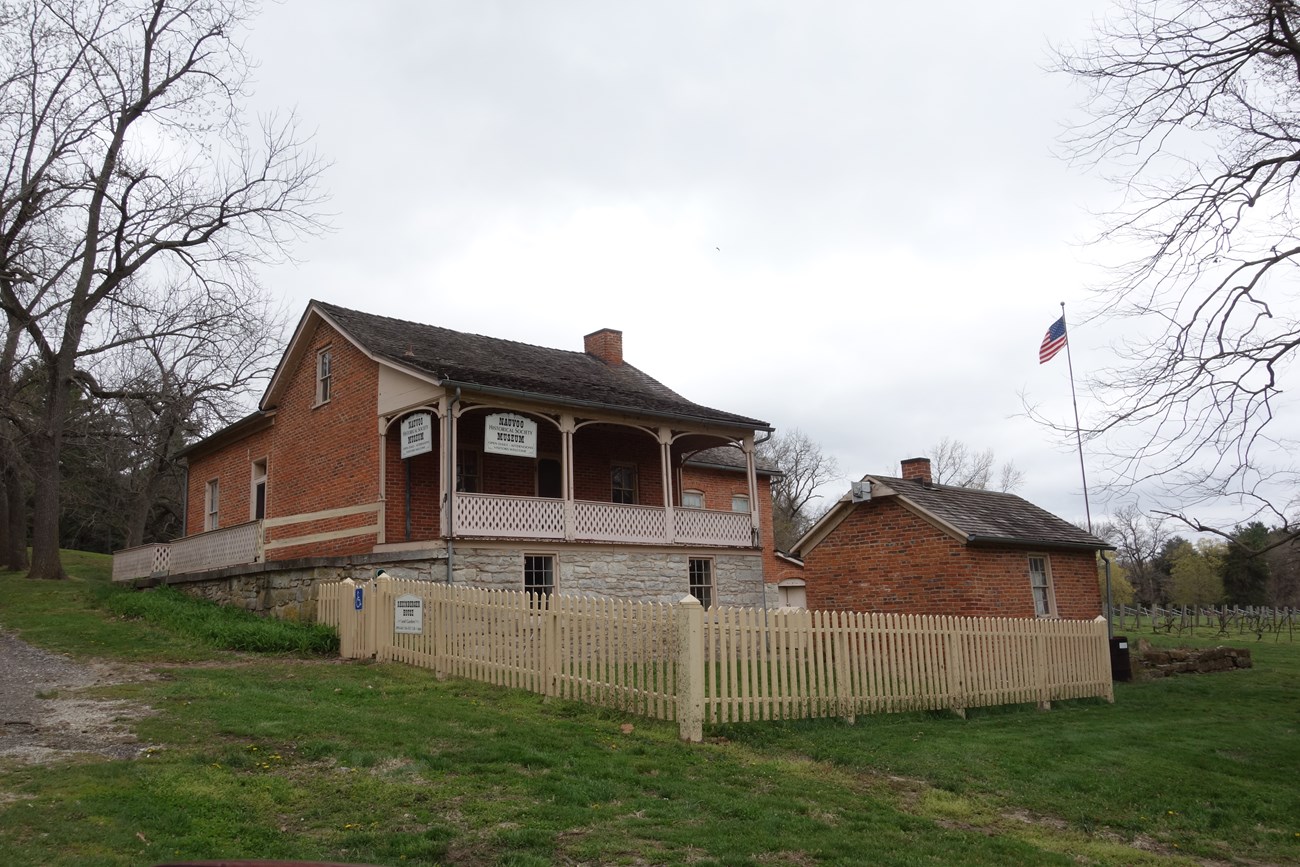
Photo/Amy Kostine
As time passed after the majority of Mormons followed Brigham Young to the West, many of Nauvoo’s iconic buildings fell into disrepair, and as deterioration continued through the beginning of the 20th century, many disappeared altogether. In the early 20th century, the Reorganized Church of Jesus Christ of Latter-day Saints (now Community of Christ) acquired several significant properties in Nauvoo, including the Joseph Smith Family Homestead, the Joseph and Emma Smith Mansion House, and Nauvoo House. In addition, descendants began buying back their ancestor's properties. In 1903, The Church of Jesus Christ of Latter-day Saints acquired the Carthage Jail, completing a partial restoration of the building in 1935. Then, in 1962, the Church organized Nauvoo Restoration Inc., acquiring over one thousand acres of land in Nauvoo and restoring many original buildings, including the home of Brigham Young, and reconstructing a total of 17 buildings (many on original foundations). Today, the city of Nauvoo is a National Historic Landmark. and the historic core of the town serves as a living history museum and a pilgrimage site for many Mormons active in the Church today.
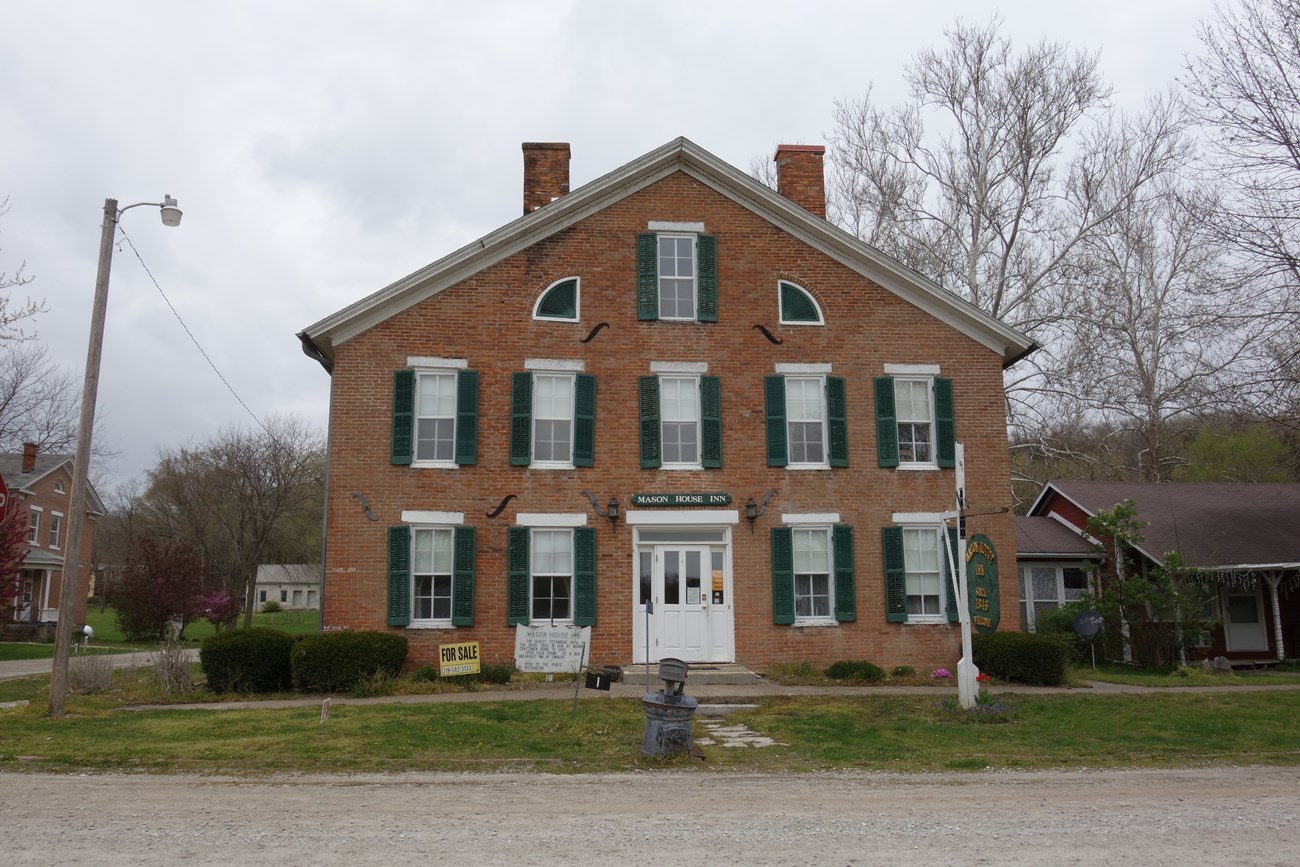
Photo/Amy Kostine
As the Mormons crossed the Mississippi River in 1846 and moved west across Iowa, they traveled through or near Bonaparte, Bentonsport, Keosauqua, and Lebanon. All have pre-1847 buildings considered resources to this survey. Of note is the Mason House Inn in Bentonsport, constructed by Mormon craftsmen in 1846, and the Van Buren County Courthouse in Keosauqua, built in 1843. Pitt’s Nauvoo Band performed at the courthouse three nights in March 1846 in exchange for supplies and cash to help support their fellow emigrants.
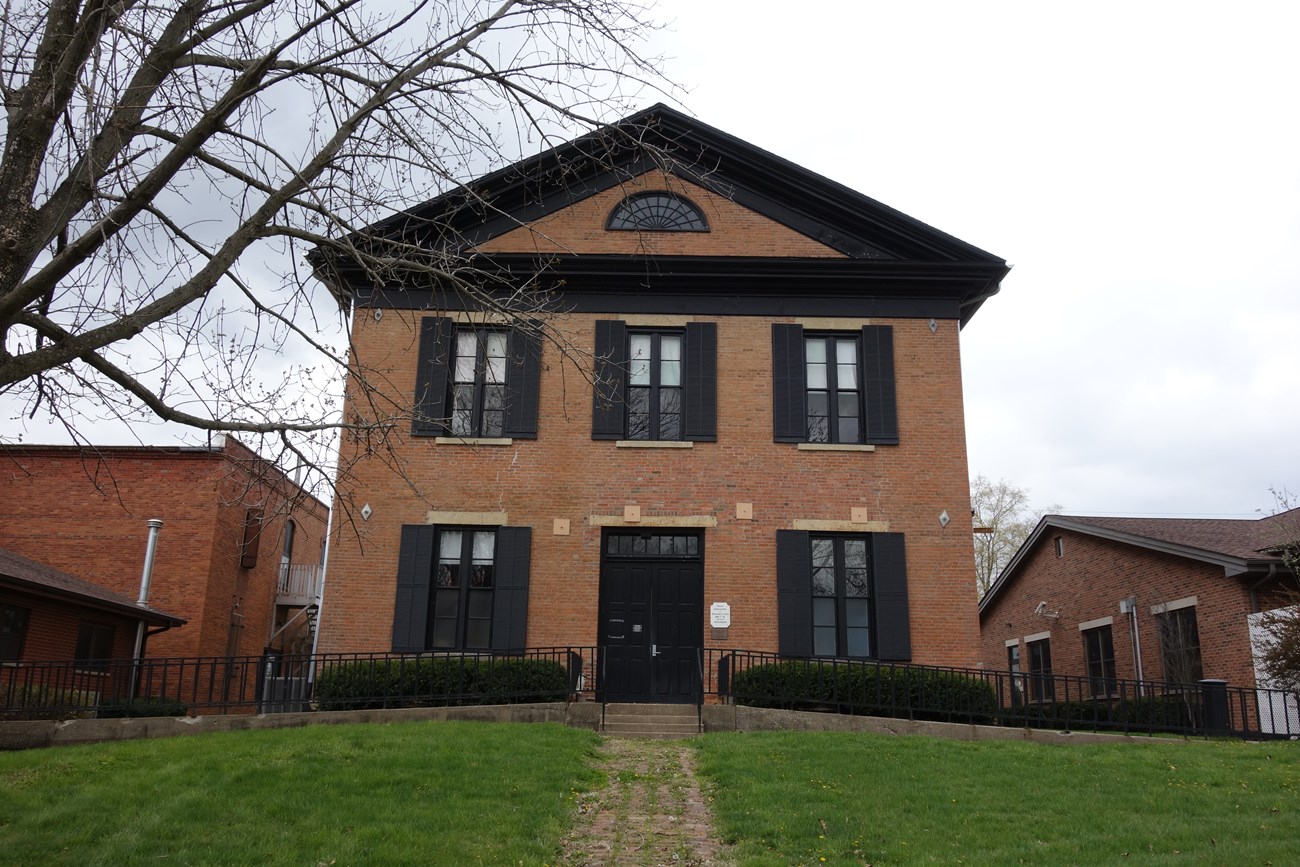
Photo/Amy Kostine
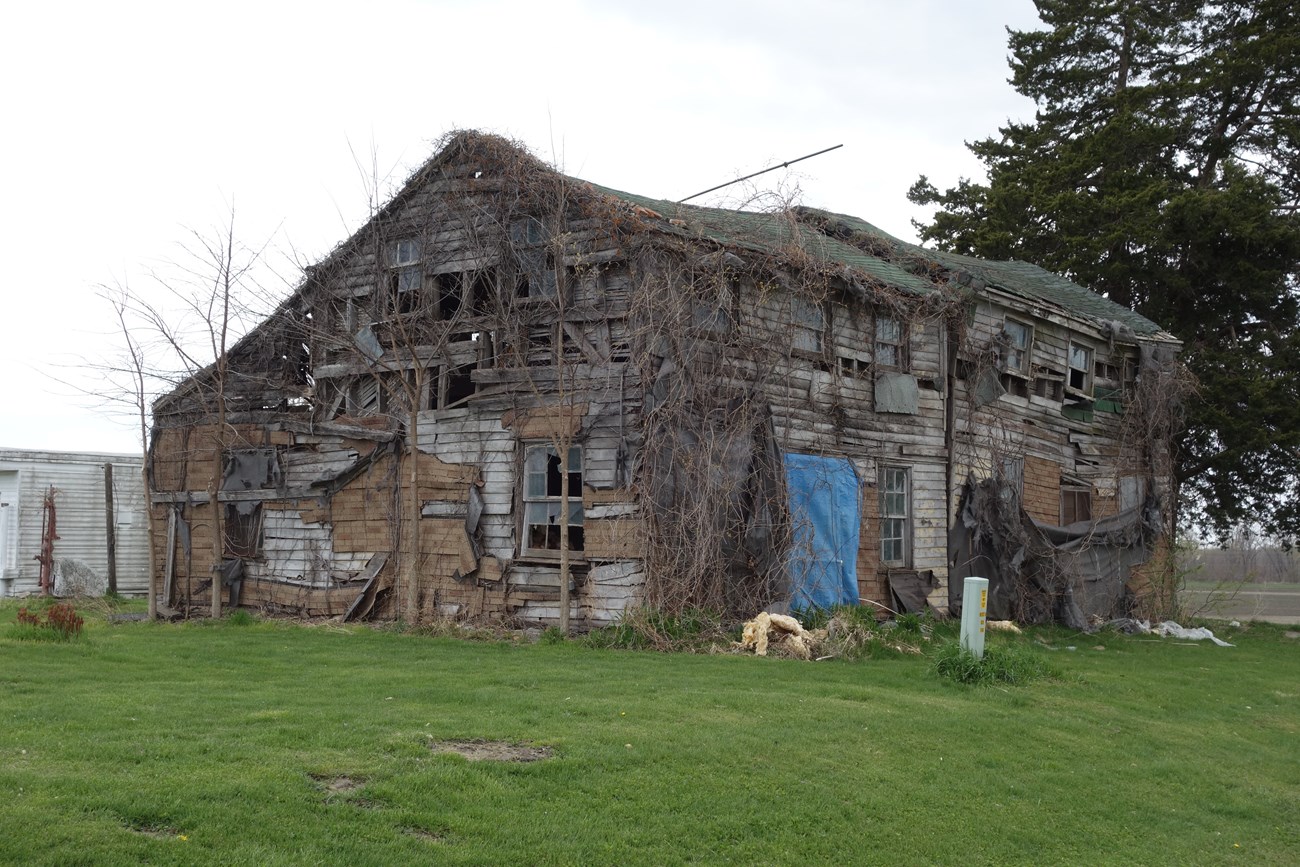
Photo/Amy Kostine
Towns and villages dwindled as the Mormon pioneers traveled farther west out of Van Buren County, Iowa. Only three additional resources in Iowa were identified for this survey west of Lebanon in Van Buren County. All of them are located within Davis Countyand two were reportedly built by Mormon emigrants. Approximately one mile west of the Van Buren-Davis County line, Mormon pioneers passed the Stringtown Stagecoach House. Listed in the National Register of Historic Places, the Stringtown Stagecoach House was built in 1832 by Byron F. Wilson. The only building in the survey in danger of collapse, it may have a direct association to the trail as Horace K. Whitney, William Kimball, and several other Mormons very likely dined at this building before returning to Richardson’s Point, where the Camp of Israel was encamped.
The other two resources in Davis County are log buildings reportedly constructed by Mormon pioneers and then later moved from their original locations. The Harbour Cabin was reportedly built c.1846-1848. Oral tradition suggests that a Mormon family, caught in a blizzard, made it to Joel Harbour’s farm near Belknap in northwest Davis County. The family asked Harbour if they could stay on the farm for the night. Harbour told them they could stay until spring if they built a log cabin. The family cut white oak on unclaimed government land 1.5 miles north of the farm and used it to build the cabin. The cabin was donated by the family of Tom and Beryl Harbour of Belknap and moved to the Davis County Historical Society Complex in Bloomfield on August 16, 1971.
Another log cabin reportedly built by Mormon pioneers is currently located in the Drakesville City Park. According to oral tradition, this log cabin was built by Mormons in 1848 in exchange for medical care and supplies. It was initially built approximately 3 miles from its current location, but was moved in 1963 when the owners, the Goldizen family, sold the land and donated the cabin to Drakesville City Park.
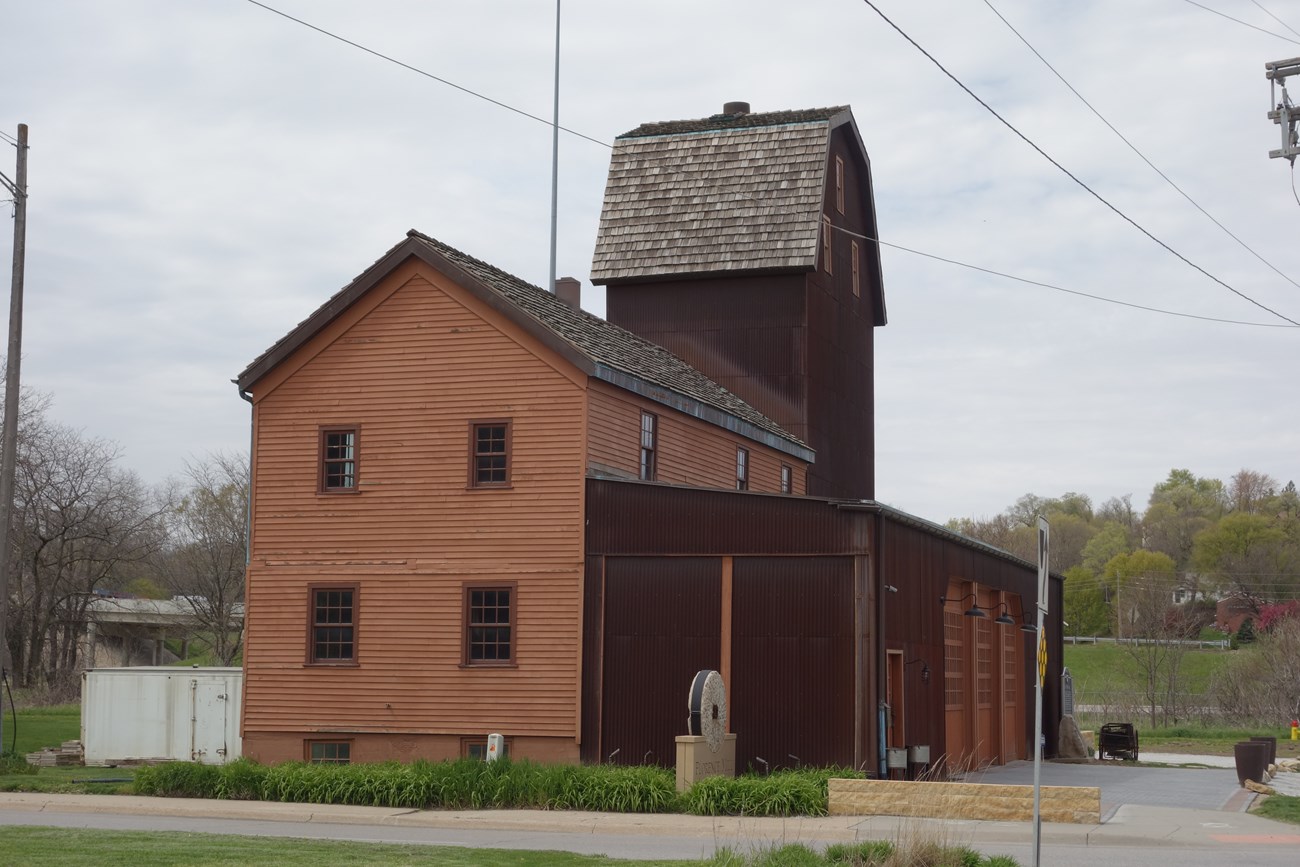
Photo/Amy Kostine
The only building identified during this survey in Nebraska was a mill known by several names over the years, including Florence Mill, Weber Mill, Winter Quarters Mill, and Old Mormon Mill. Construction of this mill at Winter Quarters (present-day Florence) began in October 1846, under the direction of millwright Frederick Kesler, Jr. and was financed by The Church of Jesus Christ of Latter-day Saints. The mill was operational by March 1847, employing about 150 men, and was one of the first mills in Nebraska. The mill was abandoned in 1848 when the Mormons left the area, and most of its valuable features were taken with them for construction of another mill at their new location. Only the frame/structure of the building was left behind. In 1856, Alexander Hunter purchased the site of the old mill and built his own mill, reusing the hand-hewn and pegged timbers from the original mill. In 1860, Jacob Weber purchased the mill. The mill operated under the Weber family for the next century, until 1964. Listed in the National Register of Historic Places, the mill has undergone an extensive transformation over the years, which included updates in 1880, a grain elevator in 1915, and then around 1939, the entire building was moved 400ft due to repeated flooding.
Each remaining building associated with the Mormon Pioneer Trail is an integral part of the trail’s landscape and story, offering a tangible connection to the past. Homes and businesses in Nauvoo serve as reminders of those individuals who fled persecution in search of religious freedom in the West. The buildings that Mormon pioneers reportedly helped construct on their journey in exchange for money, supplies, and food not only help mark the trail but are reminders of the perseverance and struggle needed to complete the journey. Those buildings located along the trail, whether they have a direct connection to the Mormon Pioneer Trail or only stood witness to it, serve as cultural landmarks and are part of the Mormon pioneers’ visual memory of their journey. Simply said, they are much more than artifacts of the past.
Contact us for a copy of the full report. ntir_information@nps.gov
